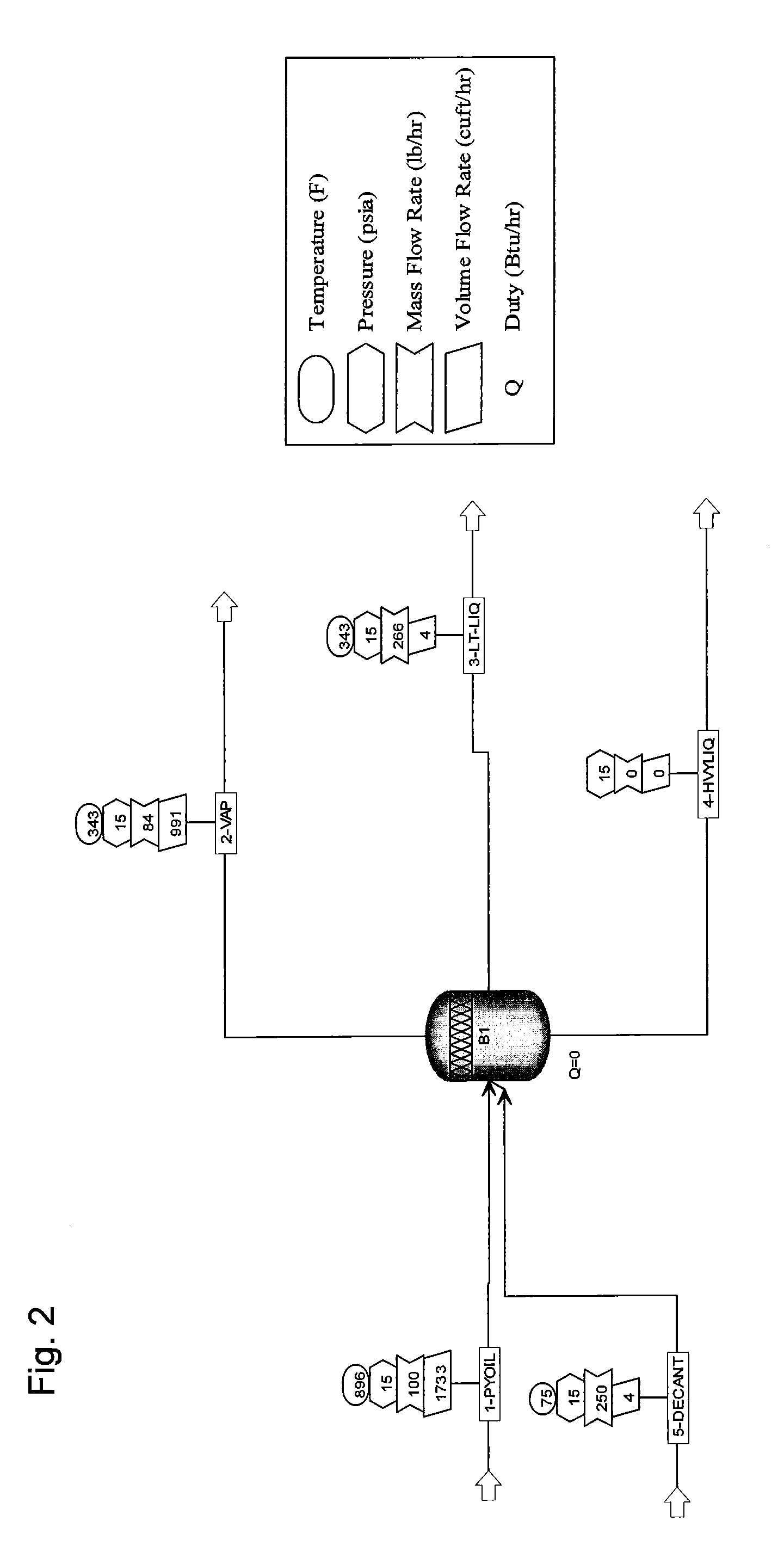Absorption and quench method for biomass pyrolysis product
a biomass pyrolysis and quenching technology, applied in the direction of dissolving, combustible gas purification/modification, separation processes, etc., can solve the problems of high heat transfer rate, significant challenges in burner design and fouling prevention, and inability to distill under ambient pressure. achieve the effect of reducing the number of pyrolysis oil oxidation reactions, and reducing the number of pyrolysis
- Summary
- Abstract
- Description
- Claims
- Application Information
AI Technical Summary
Benefits of technology
Problems solved by technology
Method used
Image
Examples
example
Model Composition for Raw Pyrolysis Oil
[0040]A model composition for raw pyrolysis oil was chosen to contain roughly equal amounts of lignin pyrolysis products (phenolics) and (hemi)cellulose pyrolysis products (carboxylic acids, anhydrosugars, and furanics). The model composition was balanced with 20 wt % water.
[0041]
TABLE 1The model compounds chosen and their relative amounts.Model CompoundBP, ° F.Wt %Products of ligninGuaiacol40113.3pyrolysispMethoxyPenol47213.3Lignin Oligomer1059*13.3Products ofFurfural32313.3(hemi)cellulose pyrolysisDilactic Acid42013.3Acetic Acid24413.3H2O21220.0*estimate
[0042]Guaiacol, para-methoxyphenol (PMP), furfural, dilactic acid, and acetic acid were chosen because they are built-in library compounds in process simulators. Any suitable pyrolysis process simulator may be used including but not limited to Aspen HYSYS® or Aspen Plus®. Guaiacol and PMP were chosen to represent products of lignin pyrolysis while furfural, dilactic acid and acetic acid were c...
PUM
| Property | Measurement | Unit |
|---|---|---|
| temperature | aaaaa | aaaaa |
| temperature | aaaaa | aaaaa |
| partition coefficients | aaaaa | aaaaa |
Abstract
Description
Claims
Application Information
 Login to View More
Login to View More - R&D
- Intellectual Property
- Life Sciences
- Materials
- Tech Scout
- Unparalleled Data Quality
- Higher Quality Content
- 60% Fewer Hallucinations
Browse by: Latest US Patents, China's latest patents, Technical Efficacy Thesaurus, Application Domain, Technology Topic, Popular Technical Reports.
© 2025 PatSnap. All rights reserved.Legal|Privacy policy|Modern Slavery Act Transparency Statement|Sitemap|About US| Contact US: help@patsnap.com



